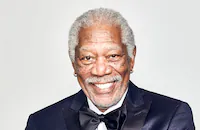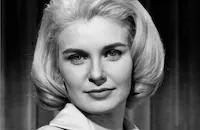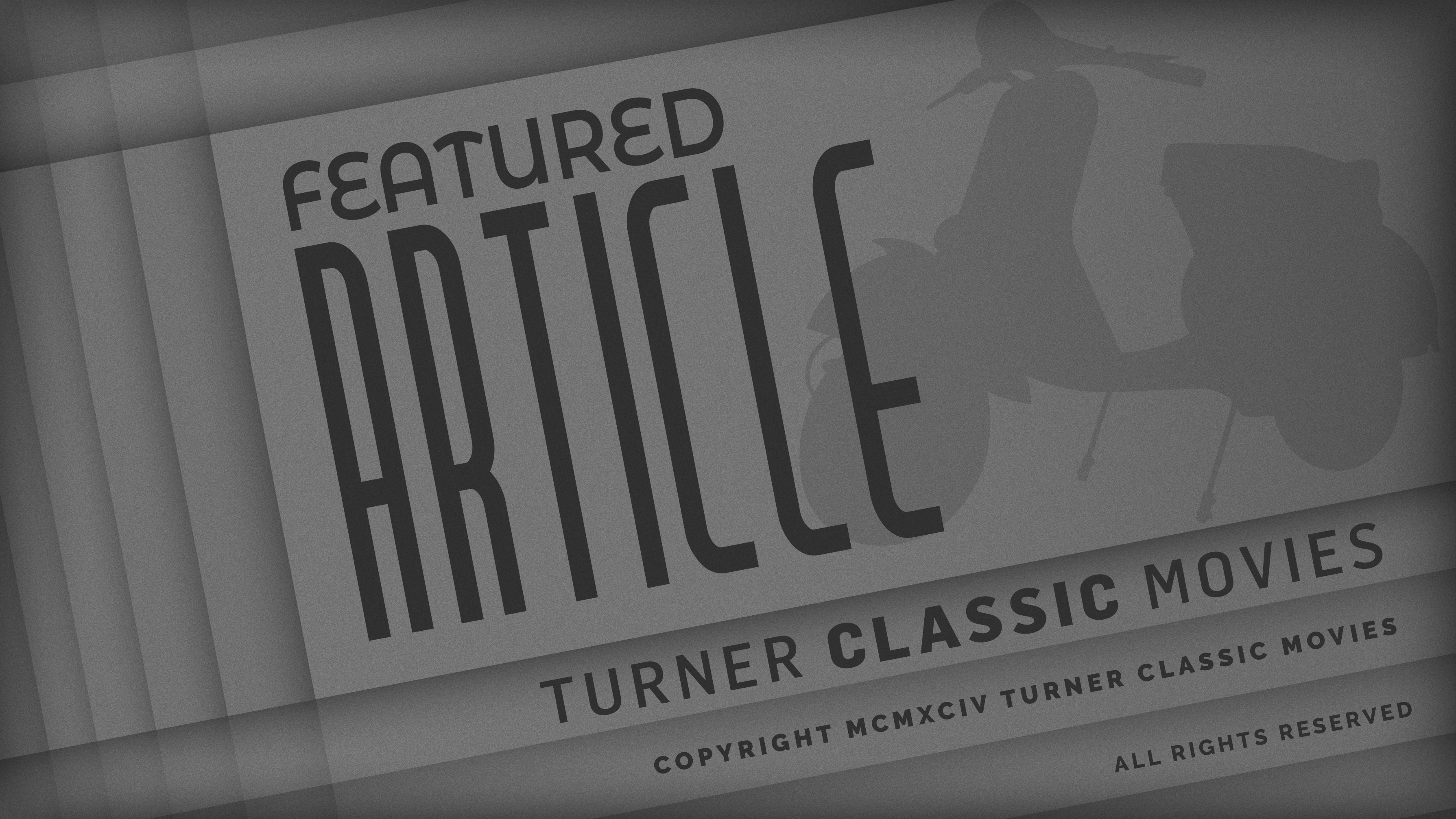Ossie Davis, the distinguished African-American character actor, director and civil rights activist, died of natural causes on February 4 in Miami Beach, where he was filming a movie. He was 87.
He was born Raiford Chatman Davis on December 18, 1917 in Cogdell, Georgia. His parents called him "R.C."
When his mother registered his birth, the county clerk misunderstood her and thought she said "Ossie" instead
of "R.C.," and the name stuck. He graduated high
school in 1936 and was offered two scholarships: one to Savannah State College in Georgia and the other to the famed Tuskegee Institute in Alabama, but he could not afford the tuition and turned them down. He eventually saved enough money to hitchhike to Washington, D.C., where he lived with relatives while attending Howard University and studied drama.
As much as he enjoyed studying dramatics, Davis had a hunger to practice the trade professionally and in 1939, he left Howard University and headed to Harlem to work in the Rose McClendon Players, a highly respected, all-black theater ensemble in its day.
Davis' good looks and deep voice were impressive from the beginning, and he quickly joined the company and remained for three years. With the onset of World War II, Davis spent nearly four years in service, mainly as a surgical technician in an all-black Army hospital in Liberia, serving both wounded troops and local inhabitants before being transferred to Special Services to write and produce stage shows for the troops.
Back in New York in 1946, Davis debuted on Broadway in Jeb, a play about a returning black soldier who runs afoul of the Ku Klux Klan in the deep south. His co-star was Ruby Dee, an attractive leading lady who was one of the leading lights of black theater and film. Their initial romance soon developed into a lasting bond, and the two were married on December 9, 1948.
With Hollywood making much more socially conscious, adult films, particularly those that tackled themes of race (Lonely Are The Brave, Pinky, Lost Boundaries all 1949), it wasn't long before Hollywood came calling for Davis. His first film, with which he co-starred with his wife Dee, was a tense Joseph L. Mankiewicz's prison drama with strong racial overtones No Way Out (1950). He followed that up with a role as a cab driver in Henry Hathaway's Fourteen Hours (1951). Yet for the most part, Davis and Dee were primarily stage actors, and made few film appearances throughout the decade.
However, in should be noted that much of Davis time in the '50s was spent in social causes. Among them, a vocal protest against the execution of Julius and Ethel Rosenberg, and an alignment with singer and black activist Paul Robeson. Davis remained loyal to Robeson even after he was denounced by other black political, sports and show business figures for his openly communist and pro-Soviet sympathies. Such affiliation led them to suspicions in the anti-Communist witch hunts of the early '50s, but Davis, nor his wife Dee, were never openly accused of any wrongdoing.
If there was ever a decade that Ossie Davis was destined for greatness, it was undoubtly the '60s. He began with a hit Broadway show, A Raisin in the Sun in 1960, and followed that up a year later with his debut as a playwright - the satire, Purlie Victorious. In it, Davis starred as Purlie, a roustabout preacher who returns to southern Georgia with a plan to buy his former master's plantation barn and turn it into a racially integrated church.
Although not an initial success, the play would be adapted into a Tony-award winning musical, Purlie years later. Yet just as important as his stage success, was the fact that Davis' film roles became much more rich and varied: a liberal priest in John Huston's The Cardinal (1963); an unflinching tough performance as a black soldier who won't break against a sadistic sergeant's racial taunts in Sidney Lumet's searing war drama The Hill (1965); and a shrewd, evil butler who turns the tables on his employer in Rod Serling's Night Gallery (1969).
In 1970, he tried his hand at film directing, and scored a hit with Cotton Comes to Harlem (1970), a sharp urban action comedy with Godfrey Cambridge and Raymond St. Jacques as two black cops trying to stop a con artist from stealing Harlem's poor. It's generally considered the first major crossover film for the black market that was a hit with white audiences. Elsewhere, he found roles in some popular television mini-series such as King, and
Roots: The Next Generation (both 1978), but for the most part, was committed to the theater.
Happily, along came Spike Lee, who revived his film career when he cast him in School Daze (1988).
Davis followed that up with two more Lee films: Do the Right Thing (1989), and Jungle Fever (1991), which also co-starred his wife Dee. From there, Davis found himself in demand for senior character parts in many films throughtout the '90s:
Grumpy Old Men (1993), The Client (1994), I'm Not Rappaport (1996), and HBO's remake of
12 Angry Men (1997).
Davis and Dee celebrated their 50th wedding anniversary in 1998 with the publication of a dual autobiography, In This Life Together, and in 2004, they were among the artists selected to receive the Kennedy Center Honors. Davis had been in Miami filming an independent movie called Retirement with co-stars George Segal, Rip Torn and Peter Falk.
In addition to his widow Dee, Davis is survived by three children, Nora Day, Hasna Muhammad and Guy Davis; and seven grandchildren.
by Michael T. Toole
Harry & Son
Cast & Crew
Read More
Paul Newman
Director
Don Moody
Morgan Freeman
Patricia A Frye
Gilberto Costa Nunes
Robert Goodman
Film Details
Also Known As
Harry and Son
MPAA Rating
Genre
Drama
Release Date
1984
Location
Broward County, Florida, USA
Technical Specs
Duration
1h 57m
Synopsis
Cast
Don Moody

Morgan Freeman
Patricia A Frye
Gilberto Costa Nunes
Robert Goodman
Katherine Borowitz
Dennis W Edwards
Harold Bergman
Joe Sikorra
Cathy Cahill
Claudia Robinson
Al Nesor
Mark Anthony Wade

Ossie Davis
Suzanne M Brierley
Jeffrey M Finn

Wilford Brimley
Judith Ivey
Joseph Hess
Jerry Barrett
Russ Wheeler
Terry Miller
Michael Brockman

Joanne Woodward
Ellen Barkin
Tom Nowicki
David Mungenast
Jill Selkowitz
Leroy Dykes
Jan Siegel
Jack Kassewitz
Maury Chaykin
Fred M Wilkins
Robby Benson
Nicole Gian
Will Knickerbocker

Paul Newman
George Warren
Joseph Alva
Bunny Yeager
Crew
Dede Allen
Editor
Stanton Barrett
Stunt Coordinator
Linda Benedict
Wardrobe
Stan Bochner
Sound Editor
Michael Brockman
Stunts
Ronald Buck
Producer
Ronald Buck
Screenplay
Henry Bumstead
Production Designer
Mary Lou Byrd
Wardrobe
Richard P. Cirincione
Associate Editor
Richard P. Cirincione
Sound Editor
Thomas Cocheo
Props
Jack Cowden
Script Supervisor
Raymond Decapite
Source Material (From Novel)
Jay Dranch
Sound Editor
Jose Duarte
Scenic Artist
Rafael Elortegui
Assistant Director
Tom Fleischman
Sound
Mary Fleming
Wardrobe
Richard Friedlander
Production Assistant
Thomas Gulino
Sound Editor
Malcolm R Harding
Associate Producer
Malcolm R Harding
Unit Production Manager
Stephen A Hope
Music Editor
Toni Howard
Casting
Don K Ivey
Set Decorator
Diane Johnson
Hair
J B Jones
Special Effects
Neil L Kaufman
Sound Editor
Eddie Knott
Key Grip
William Kruzykowski
Assistant Editor
Beth Lambert
Makeup
Henry Mancini
Music
Max Manlove
Production Coordinator
Michael Marx
Assistant Director
Donald M. Mcalpine
Director Of Photography
David Mcgiffert
Assistant Director
John Mcgowan
Camera Operator
Michael P. Mcgowan
Camera Operator
Paul Newman
Producer
Paul Newman
Screenplay
Bitty O'sullivan-smith
Assistant Editor
Peter Odabashian
Sound Editor
Kerry Orent
Post-Production Supervisor
James Pergola
Director Of Photography
Randi Rosen
Production Assistant
Chuck Rowley
Location Manager
William S. Scharf
Adr Editor
Lynn Stalmaster
Casting
Ann Tait-rourk
Production Associate
Richard Vorisek
Sound
Jean Fraser Wardle
Adr Editor
Howard Warren
Sound
Monty Westmore
Makeup
Film Details
Also Known As
Harry and Son
MPAA Rating
Genre
Drama
Release Date
1984
Location
Broward County, Florida, USA
Technical Specs
Duration
1h 57m
Articles
Ossie Davis (1917-2005)

Ossie Davis (1917-2005)
Ossie Davis, the distinguished African-American character actor, director and civil rights activist, died of natural causes on February 4 in Miami Beach, where he was filming a movie. He was 87.
He was born Raiford Chatman Davis on December 18, 1917 in Cogdell, Georgia. His parents called him "R.C."
When his mother registered his birth, the county clerk misunderstood her and thought she said "Ossie" instead
of "R.C.," and the name stuck. He graduated high
school in 1936 and was offered two scholarships: one to Savannah State College in Georgia and the other to the famed Tuskegee Institute in Alabama, but he could not afford the tuition and turned them down. He eventually saved enough money to hitchhike to Washington, D.C., where he lived with relatives while attending Howard University and studied drama.
As much as he enjoyed studying dramatics, Davis had a hunger to practice the trade professionally and in 1939, he left Howard University and headed to Harlem to work in the Rose McClendon Players, a highly respected, all-black theater ensemble in its day.
Davis' good looks and deep voice were impressive from the beginning, and he quickly joined the company and remained for three years. With the onset of World War II, Davis spent nearly four years in service, mainly as a surgical technician in an all-black Army hospital in Liberia, serving both wounded troops and local inhabitants before being transferred to Special Services to write and produce stage shows for the troops.
Back in New York in 1946, Davis debuted on Broadway in Jeb, a play about a returning black soldier who runs afoul of the Ku Klux Klan in the deep south. His co-star was Ruby Dee, an attractive leading lady who was one of the leading lights of black theater and film. Their initial romance soon developed into a lasting bond, and the two were married on December 9, 1948.
With Hollywood making much more socially conscious, adult films, particularly those that tackled themes of race (Lonely Are The Brave, Pinky, Lost Boundaries all 1949), it wasn't long before Hollywood came calling for Davis. His first film, with which he co-starred with his wife Dee, was a tense Joseph L. Mankiewicz's prison drama with strong racial overtones No Way Out (1950). He followed that up with a role as a cab driver in Henry Hathaway's Fourteen Hours (1951). Yet for the most part, Davis and Dee were primarily stage actors, and made few film appearances throughout the decade.
However, in should be noted that much of Davis time in the '50s was spent in social causes. Among them, a vocal protest against the execution of Julius and Ethel Rosenberg, and an alignment with singer and black activist Paul Robeson. Davis remained loyal to Robeson even after he was denounced by other black political, sports and show business figures for his openly communist and pro-Soviet sympathies. Such affiliation led them to suspicions in the anti-Communist witch hunts of the early '50s, but Davis, nor his wife Dee, were never openly accused of any wrongdoing.
If there was ever a decade that Ossie Davis was destined for greatness, it was undoubtly the '60s. He began with a hit Broadway show, A Raisin in the Sun in 1960, and followed that up a year later with his debut as a playwright - the satire, Purlie Victorious. In it, Davis starred as Purlie, a roustabout preacher who returns to southern Georgia with a plan to buy his former master's plantation barn and turn it into a racially integrated church.
Although not an initial success, the play would be adapted into a Tony-award winning musical, Purlie years later. Yet just as important as his stage success, was the fact that Davis' film roles became much more rich and varied: a liberal priest in John Huston's The Cardinal (1963); an unflinching tough performance as a black soldier who won't break against a sadistic sergeant's racial taunts in Sidney Lumet's searing war drama The Hill (1965); and a shrewd, evil butler who turns the tables on his employer in Rod Serling's Night Gallery (1969).
In 1970, he tried his hand at film directing, and scored a hit with Cotton Comes to Harlem (1970), a sharp urban action comedy with Godfrey Cambridge and Raymond St. Jacques as two black cops trying to stop a con artist from stealing Harlem's poor. It's generally considered the first major crossover film for the black market that was a hit with white audiences. Elsewhere, he found roles in some popular television mini-series such as King, and
Roots: The Next Generation (both 1978), but for the most part, was committed to the theater.
Happily, along came Spike Lee, who revived his film career when he cast him in School Daze (1988).
Davis followed that up with two more Lee films: Do the Right Thing (1989), and Jungle Fever (1991), which also co-starred his wife Dee. From there, Davis found himself in demand for senior character parts in many films throughtout the '90s:
Grumpy Old Men (1993), The Client (1994), I'm Not Rappaport (1996), and HBO's remake of
12 Angry Men (1997).
Davis and Dee celebrated their 50th wedding anniversary in 1998 with the publication of a dual autobiography, In This Life Together, and in 2004, they were among the artists selected to receive the Kennedy Center Honors. Davis had been in Miami filming an independent movie called Retirement with co-stars George Segal, Rip Torn and Peter Falk.
In addition to his widow Dee, Davis is survived by three children, Nora Day, Hasna Muhammad and Guy Davis; and seven grandchildren.
by Michael T. Toole
Quotes
Trivia
Miscellaneous Notes
Released in United States March 1984
Released in United States Spring March 1, 1984
Completed shooting November 1983.
Released in United States March 1984
Released in United States Spring March 1, 1984













